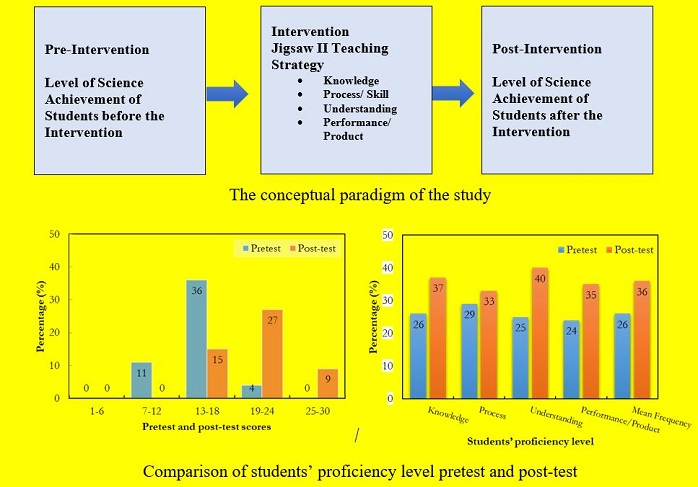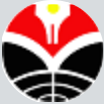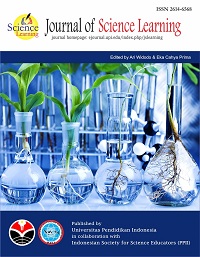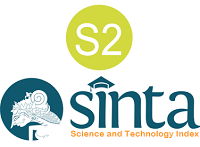
Enhancing Students’ Science Achievement through Jigsaw II Strategy
Abstract
The Science education curriculum in the Philippines has shifted from inputs-based to outcomes-based education putting the learners at the core of the instruction. Hence, educators continue to innovate ways on how to engage the learners into a relevant and responsive science instruction. Further, the implementation of the K to 12 curriculum brings a paradigm shift in education in terms of pedagogy, assessment and outcomes. This within group quasi-experimental research attempts to test the effects of Jigsaw II strategy on the students’ science achievement. A total of 51 Grade 9 students in a government-run secondary school in Zambales, Philippines participated in the study. Results revealed that the class improved from “approaching proficiency” to “proficient” level in their science achievement after the implementation of the strategy. It was found out that Jigsaw II strategy had a significant effect on the science achievement of the learners. The study recommends the use of the instructional strategy in enhancing students’ achievement. The strategy may be applied in other science topics to further see its effectiveness. This paper likewise contributes to the literature on the effectiveness of Jigsaw II learning strategy in the science teaching in the Philippine context.
Full Text:
DOWNLOAD PDFReferences
Abed, A. Z., Sameer, S. A., Kasim, M. A., & Othman, A. T. (2019). Predicting Effect Implementing the Jigsaw Strategy on the Academic Achievement of Students in Mathematics Classes. International Electronic Journal of Mathematics Education, 15(1), em0558.
Aronson, E. (2000). Nobody left to hate — the Humanist, 60(3), 17.
Aronson, E., & Patnoe, S. (2011). Cooperation in the Classroom: The Jigsaw Method. London. UK: Pinter & Martin.
Azmin, N. H. (2016). Effect of the Jigsaw-Based Cooperative Learning Method on Student Performance in the General Certificate of Education Advanced-Level Psychology: An Exploratory Brunei Case Study. International Education Studies, 9(1), 91-106.
Baron, R. (2019). Employing Jigsaw in English Academic Writing: An Action Research in An EFL Class in Indonesia. Research and Innovation in Language Learning, 2(3), 228-236.
Barrett, T. (2005). Effects of cooperative learning on performance of sixth-grade physical education students. Journal of Teaching in Physical Education, 24(1), 88-102.
Candrasekaran, S. (2014). Productive Methods of Teaching Middle School Science. International Journal of Humanities and Social Science Invention, 3(7), 15-25.
Chukwu, J. C., & Dike, J. W. (2019). Effects of Jigsaw-puzzle and Graphic Organizer Instructional Strategies on Biology Students’ Performance in Abia State. Archives of Current Research International, 1-6.
Doymus, K. (2007). Effects of a cooperative learning strategy on teaching and learning phases of matter and one-component phase diagrams. Journal of Chemical Education, 84(11), 1857.
Evcim, H., & İpek, Ö. F. (2013). Effects of jigsaw II on academic achievement in English prep classes. Procedia-Social and Behavioral Sciences, 70, 1651-1659.
Fry, Heather, Ketteridge, Steve, & Marshall, Stephanie. A handbook for teaching and learning in higher education: Enhancing academic practice. Routledge, 2008.
Gernale, J. P., Arañes, F. Q., & Duad, V. (2015). The Effects of Predict-Observe-Explain (POE) Approach on Students’ Achievement and Attitudes Towards Science. The Normal Lights, 9(2).
Gömleksiz, M. N. (2007). Effectiveness of cooperative learning (jigsaw II) method in teaching English as a foreign language to engineering students (Case of Firat University, Turkey). European journal of engineering education, 32(5), 613-625.
Hedeen, T. (2003). The reverse jigsaw: A process of cooperative learning and discussion. Teaching Sociology, 31(3), 325-332.
Johnson, D. W., & Johnson, R. T. (1987). Learning together and alone: Cooperative, competitive, and individualistic learning. Prentice-Hall, Inc.
Kam-Wing, C. (2004). Using Jigsaw II in Teacher Education Programmes. Hong Kong Teachers’ Centre Journal, 3, 91-97.
Maden, S. (2011). Effect of Jigsaw I Technique on Achievement in Written Expression Skill. Educational Sciences: Theory and Practice, 11(2), 911-917.
Mbacho, N. W., & Changweiywo, J. M. (2013). Effects of jigsaw cooperative learning strategy on students’ achievement by gender differences in secondary school mathematics in Laikipia East District, Kenya. Journal of Education and Practice, 4(16), 55-63.
Mohammed, I. J., & Hamied, D. T. (2019). Using Jigsaw Cooperative Learning Strategy to Improve The EFL Iraqi Students in Writing Skill. Journal Of Al-Frahedis Arts, 11(38), 504-524.
Oliveira, B. R., Vailati, A. L., Luiz, E., Böll, F. G., & Mendes, S. R. (2019). Jigsaw: Using Cooperative Learning in Teaching Organic Functions. Journal of Chemical Education.
Panitz, T. (1996). Getting students ready for learning. Cooperative Learning and College Teaching, 6(2), 10-30.
Rogayan Jr, D. V., & Bautista, J. R. (2019). Filipino Students’ Preferred Motivational Strategies in Science: A Cross-Sectional Survey. IRJE (Indonesian Research Journal in Education), 358-372.
Rogayan, D.V., Jr. & Dollete, L.F. (2019). Development and Validation of Physical Science Workbook for Senior High School. Science Education International, 30(4).
Rogayan Jr, D. V. (2019). Biology learning station strategy (BLISS): Its effects on science achievement and attitude towards biology. International Journal on Social and Education Sciences, 1(2), 78-89.
Siegel, C. (2005). Implementing a research-based model of cooperative learning. The Journal of Educational Research, 98(6), 339-349.
Slavin, R. E. (1986). Using student team learning (3rd ed.). Baltimore, MD: The Johns Hopkins University.
Slavin, R. E., & Davis, N. (2006). Educational psychology: Theory and practice.
Sudrajat, A., Iasha, V., & Femayati, F. (2019). The Influence of the Use of Cooperative Learning Model Jigsaw & Two Stay Two Stray and the Learning Interest Result on 5th Grade Social Science. ICEAP 2019, 2(2), 28-33.
Suroto, M. (2017). The Effectiveness of Jigsaw II Model in Improving Students' Understanding of Citizenship Education. In 5th SEA-DR (South East Asia Development Research) International Conference 2017 (SEADRIC 2017). Atlantis Press.
Ward, P., & Lee, M. A. (2005). Peer-assisted learning in physical education: A review of theory and research. Journal of teaching in physical education, 24(3), 205-225.
Yimer, S. T., & Feza, N. N. (2019). Learners’ Conceptual Knowledge Development and Attitudinal Change towards Calculus Using Jigsaw Co-operative Learning Strategy Integrated with GeoGebra. International Electronic Journal of Mathematics Education, 15(1), em0554.
Yoshida, M. (2018). Communication Jigsaw: A Teaching Method that Promotes Scholarly Communication. International Journal of Emerging Technologies in Learning (iJET), 13(10), 208-224.
DOI: https://doi.org/10.17509/jsl.v3i1.17680
Refbacks
Copyright (c) 2019 James L. Tabiolo, Danilo Jr. Villar Rogayan

This work is licensed under a Creative Commons Attribution-ShareAlike 4.0 International License.


Jl. Dr. Setiabudhi 229 Bandung 40154, West Java, Indonesia










